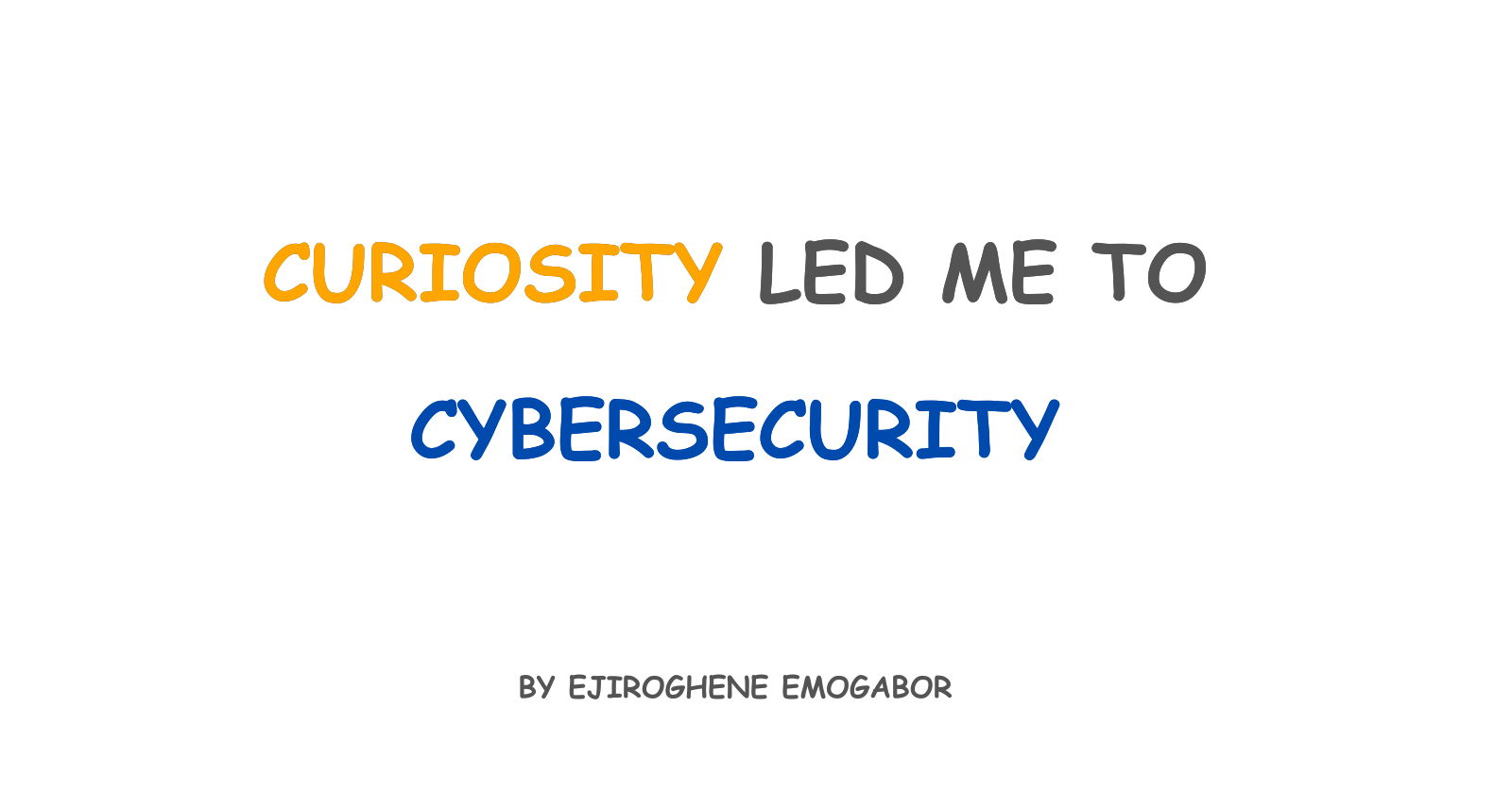From Curiosity to Cybersecurity
 Ejiroghene Emogabor
Ejiroghene Emogabor
It’s been a while since I last posted, and honestly, I hit a bit of a creative block. But recently, something sparked my curiosity…
Not long ago, I found myself diving into something entirely new—cybersecurity. Now, I'm not aiming to become a full-fledged cybersecurity expert, but I felt it was time to broaden my knowledge, especially since I work in the tech industry.
It all started with a podcast. The guest was a business analyst who also happened to be a cybersecurity expert. I found it fascinating that someone could merge these two fields, and that curiosity led me to the book "Cybersecurity for Executives."
The book approaches cybersecurity from a management perspective rather than a purely technical one, which is perfect for someone like me who’s not coding day in and day out but still wants to understand the bigger picture.
"The first step in solving a problem is to understand it." - George Polya
This quote really resonated with me. It’s not just about cybersecurity; it applies to any business challenge. To tackle cybersecurity, you need to understand what it is, how it impacts your business, and how to prepare your team to defend against it. The authors make it clear that cybersecurity isn’t just a technical issue—it’s a business issue that affects every part of the organization.
One of the most interesting points the book makes is that cybersecurity should be approached from a manager’s perspective rather than a technologist’s. As much as we need our tech teams to be on top of the latest threats, executives and managers are the ones who steer the ship. The focus should be on managing risks, not just understanding the technical details. After all, the goal is to keep the organization safe, profitable, and aligned with its mission.
When it comes to risk management, this is where the real conversation should start. It’s about identifying the risks your organization faces and putting measures in place to mitigate them. Cybersecurity isn’t just about preventing attacks; it’s about being prepared to respond effectively when (not if) they happen. The book suggests that good cybersecurity practices are about optimizing both human and physical resources to ensure that when something goes wrong, the business can recover quickly and continue to operate smoothly.
This journey into cybersecurity has been more than just learning the technical side of things; it’s been about understanding how these issues fit into the bigger picture of business management. I’m excited to continue exploring this field and to share more insights with you all. If you’re an executive or in a leadership position, this book is a great resource to start with. It helps bridge the gap between the tech world and the business world, making cybersecurity something that everyone in the organization can understand and contribute to.
What are your thoughts on the intersection of business analysis and cybersecurity? Let’s discuss!
Subscribe to my newsletter
Read articles from Ejiroghene Emogabor directly inside your inbox. Subscribe to the newsletter, and don't miss out.
Written by

Ejiroghene Emogabor
Ejiroghene Emogabor
Hi! I'm Ejiro, a passionate business analyst. Business analysis isn't just my job, it's a mindset that's taught me to make informed decisions confidently. Join me on this exciting journey through the world of business analysis!